Your cart is currently empty!
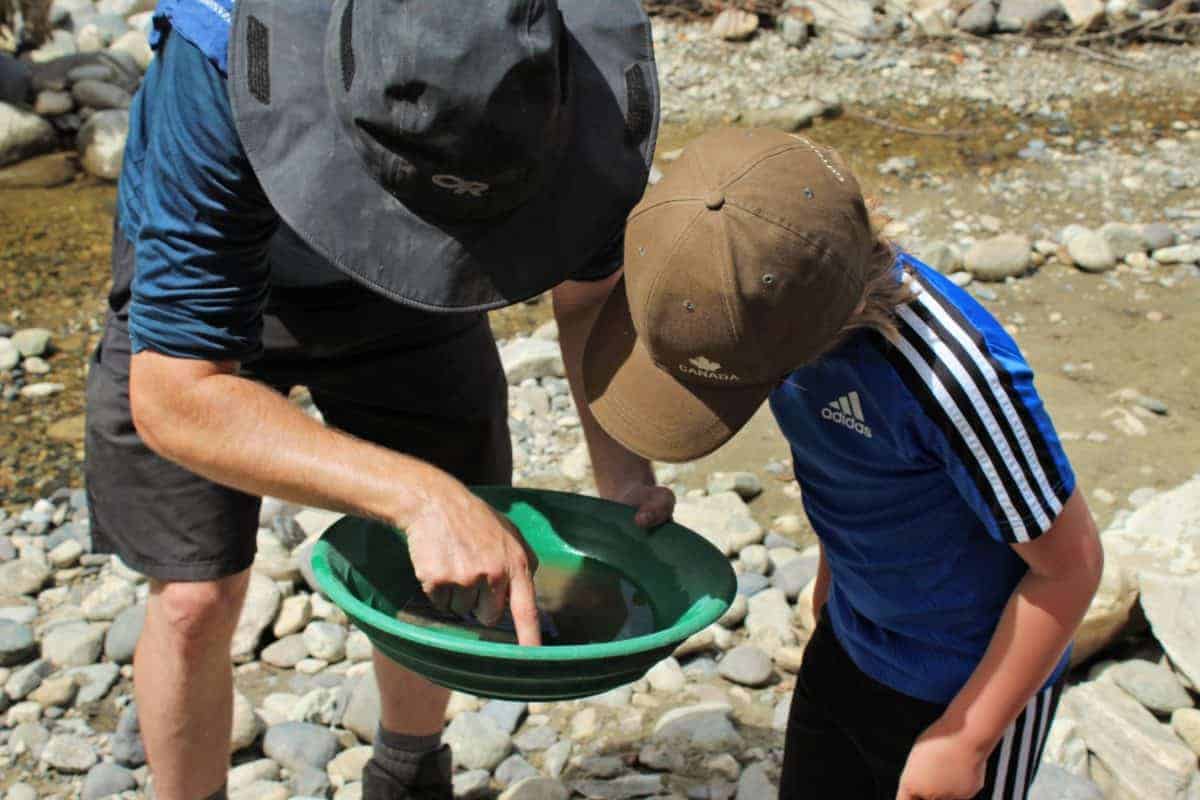
How to Pan for Gold with Kids
All that glitters isn’t gold…but it might be! Have you ever been panning for gold? It’s easier than you might imagine to get started with this fun outdoor activity! Gold panning is a great way to get the entire family outside, spend time in nature, learn about history, and maybe even strike it rich! Today, we have Kat Hodgins, Canadian mom, and writer, here to share her experience panning for gold with kids. She’s got all the tips you need on how to pan for gold, what to pack, where to find gold, and how to make gold panning fun for kids.
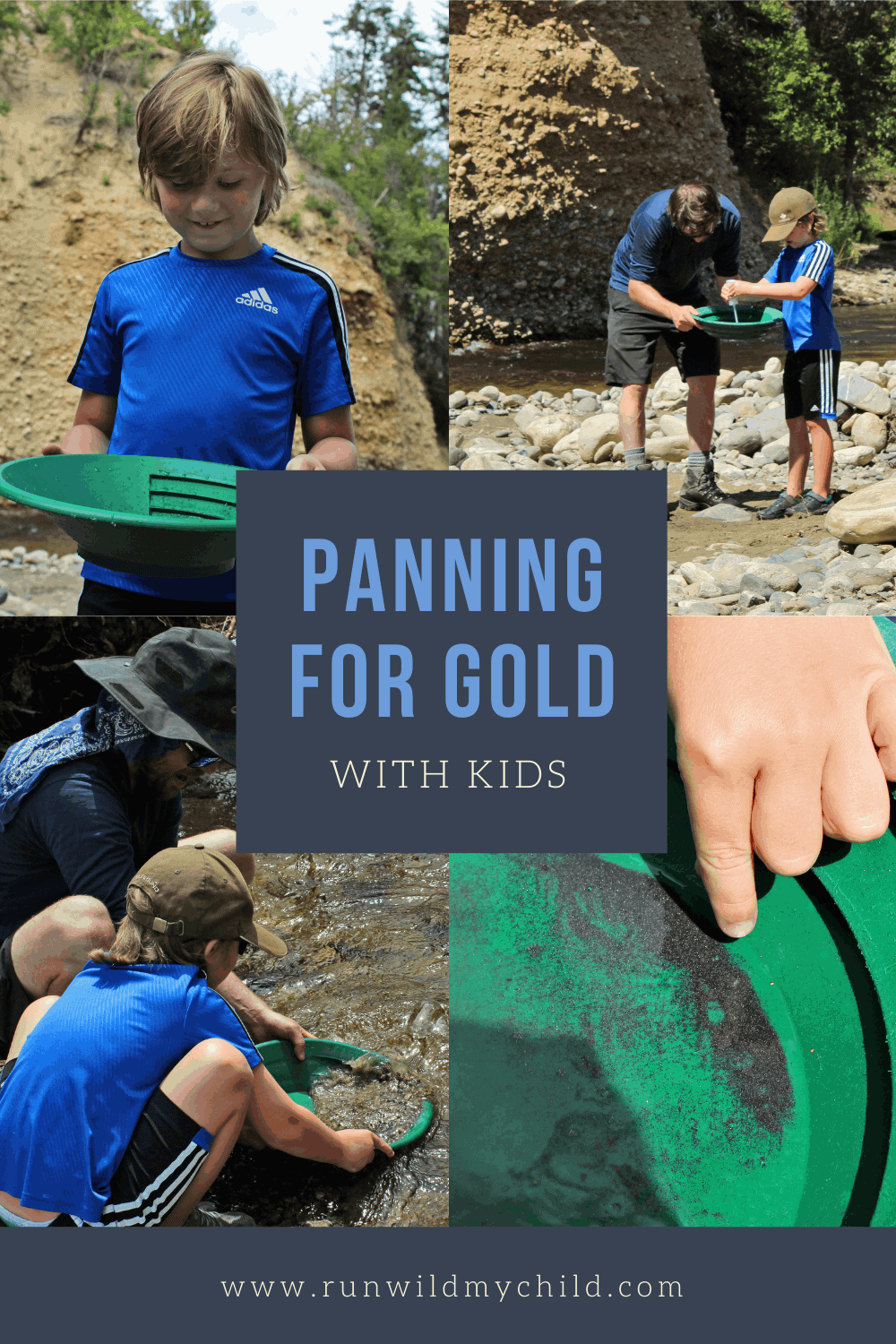
Gold fever
Gold fever, it’s catching—even long after the gold rush.
We’re a family of west-coast Canadians who use gold panning as an excuse to get out and explore nature. It’s an activity that we love to do as a family. However, our baby is less than a year old, making her more of a spectator than a participant in gold panning. Taking her to the creek is short-lived and involves very little panning.
We wanted to see how an older kid fared when it came to an afternoon of prospecting so we know what to expect in a few years. A weekend visiting family allowed us to borrow my nephew to see if he enjoyed an afternoon gold panning by the creek. We spent a weekend in the semi-desert climate of Kelowna, BC recently, which is where we took these photos.
My husband, the gold prospector, found a few gold panning spots in Kelowna thanks to his network of gold panning enthusiasts. We drove through a residential neighborhood and parked the car in a small park. It doesn’t sound like there would be rustic nature nearby, but it can be found almost anywhere if you know where to look. A short hike down a dusty trail, through a wall of trees, we emerged creekside. This oasis didn’t seem like it belonged minutes away from houses and a bike park. Talk about a great surprise.
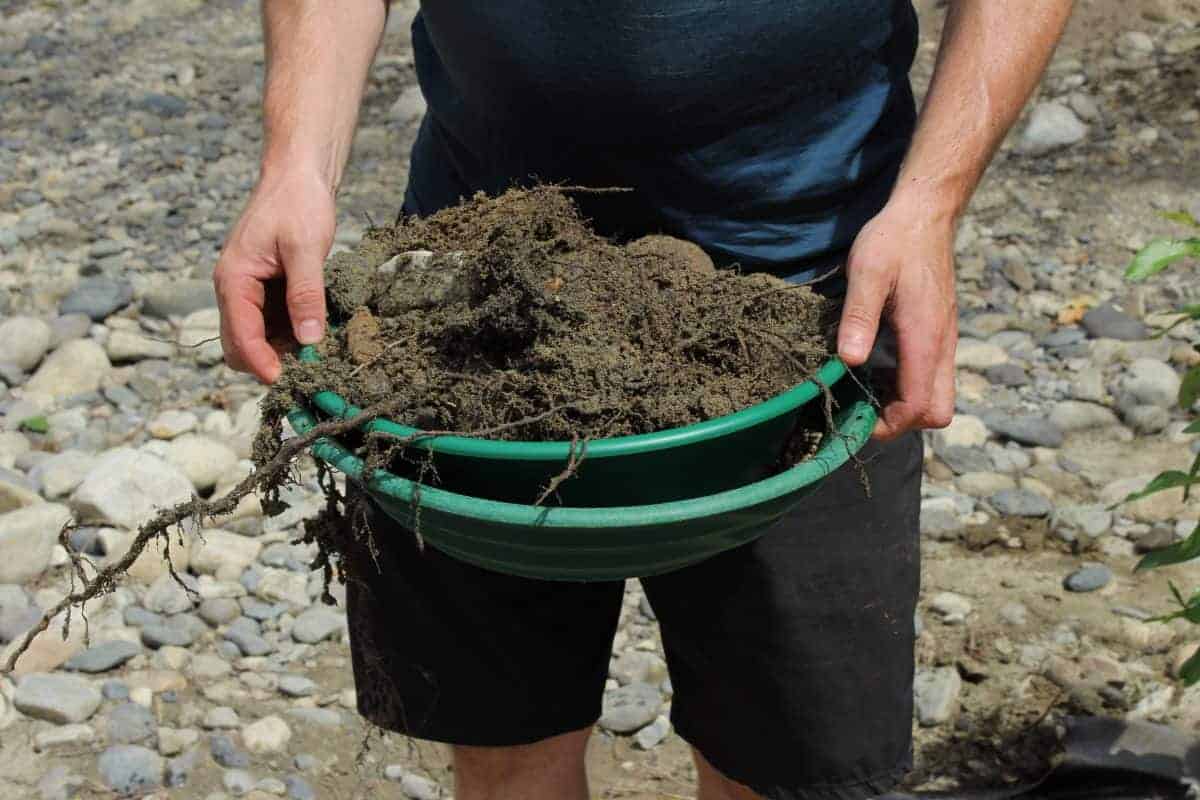
Why gold panning?
Though the gold rush has long since passed, there’s still adventure out there when it comes to the thrill of the hunt for gold. Gold panning is a great history lesson for kids. It’s also a hands-on way for them to experience how prospectors back in the day found their riches. Panning is also a fun way to get kids outside and introduce them to a lifelong hobby. Before you go, do yourself a favor and learn a bit of gold rush history. This way you can share some tales with your kids while you’re out by the creek.
My husband is a walking encyclopedia on the history of gold panning. He knows where to find gold, the best tricks for finding gold, how to read the land, what the rock formations tell you, and more (so, so, so much more). He kept a steady dialogue for my nephew who seemed to appreciate the facts and tidbits about a foregone era.
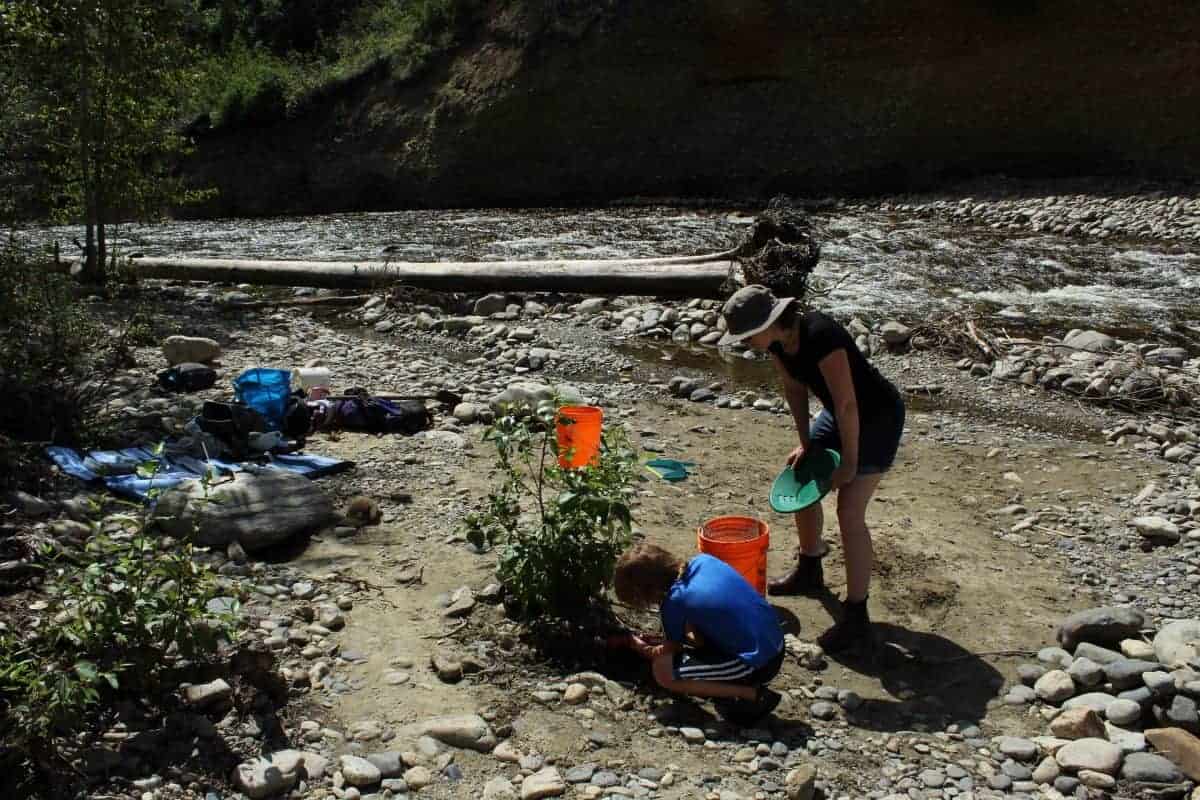

How to dress for gold panning
You don’t need any special attire for panning for gold with kids, which is a great perk of the hobby. Everything your kid needs, they likely have in their closet. A simple t-shirt (or a sun shirt) and shorts are all they need to wear. In an ideal world, they’re in a wide-brimmed hat and rain boots (or water shoes), but a baseball hat and some sneakers will do if you don’t mind them getting wet. If it’s sunny, don’t forget the sunscreen.
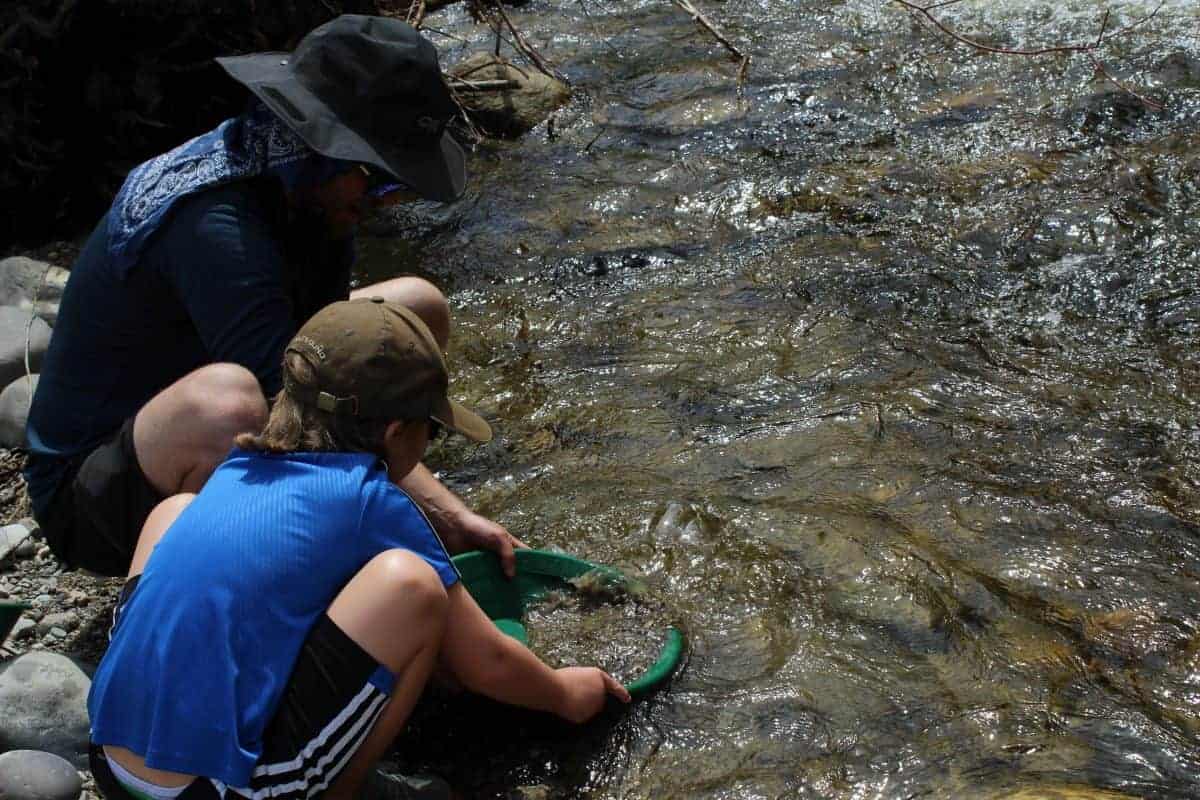
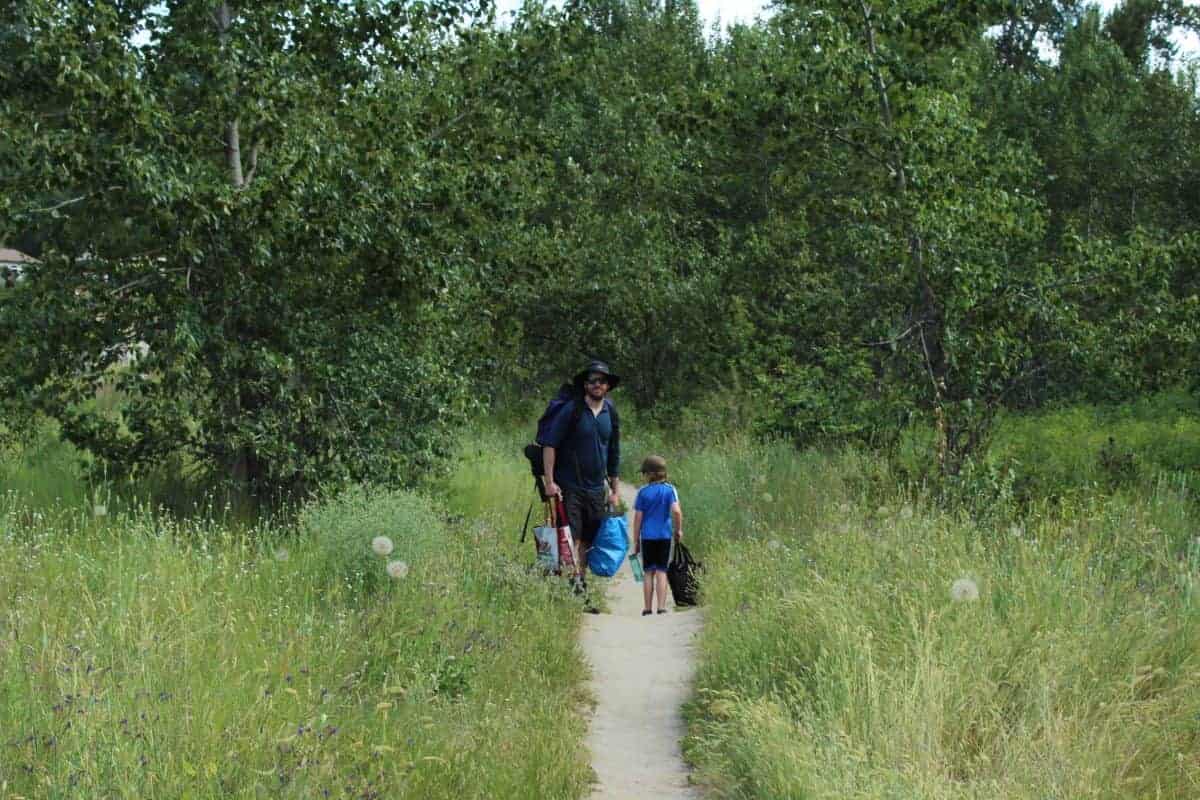
Things to bring gold panning
If you’re just starting out, all you really need to go panning for gold with kids is a pan and a shovel. Since my husband has become a full-blown prospector, we have all the additional gear: buckets, a pickaxe, gold vials, snuffer bottles, and various other gold panning paraphernalia (most of which I have no idea how to use). You don’t need all this stuff, especially if you’re new to the gold pan game.
A few other things you may want to bring:
- Water
- Snacks/lunch
- Towel
- Sunglasses
- Beach toys
- Shade cover for little ones
- Sunscreen (make sure you apply it and reapply it—especially if you’ve borrowed your nephew for the day)
- Bear spray (in certain areas—but make sure you keep it out of reach of children!)
- A change of clothes in case you get wet
- A pair of dry (or more comfortable) shoes
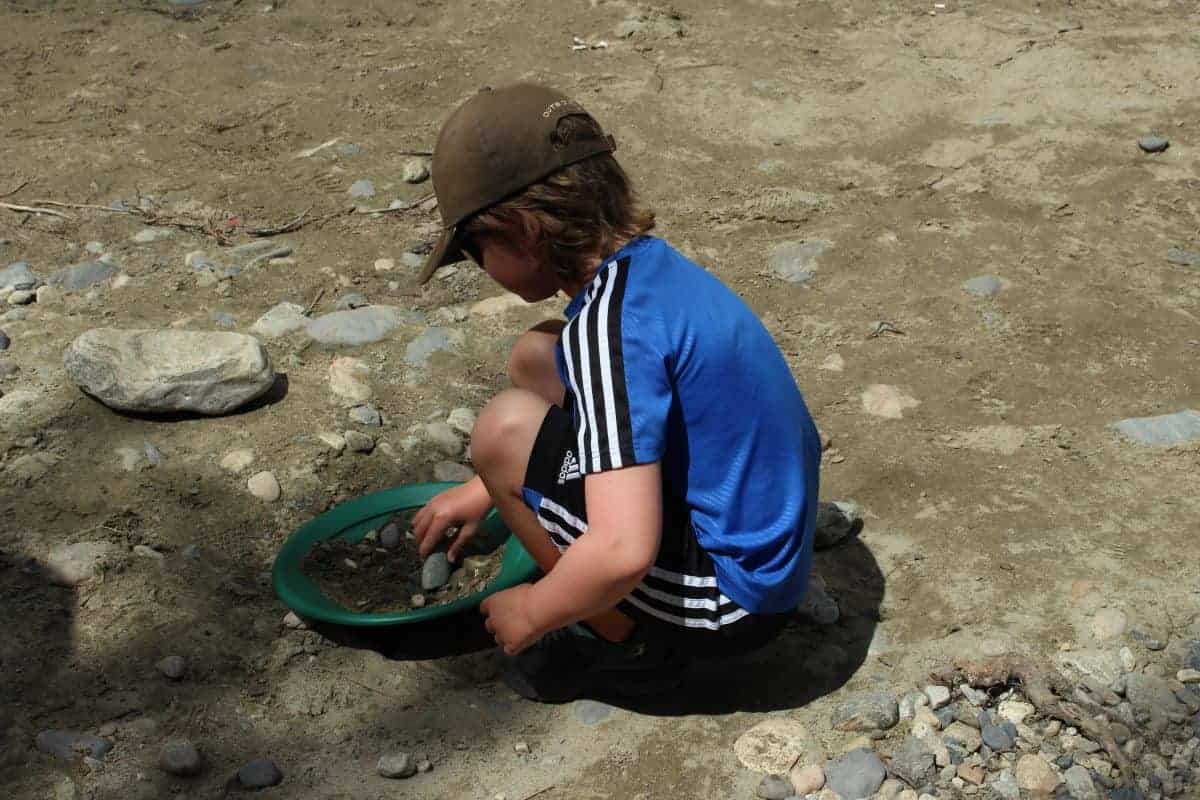
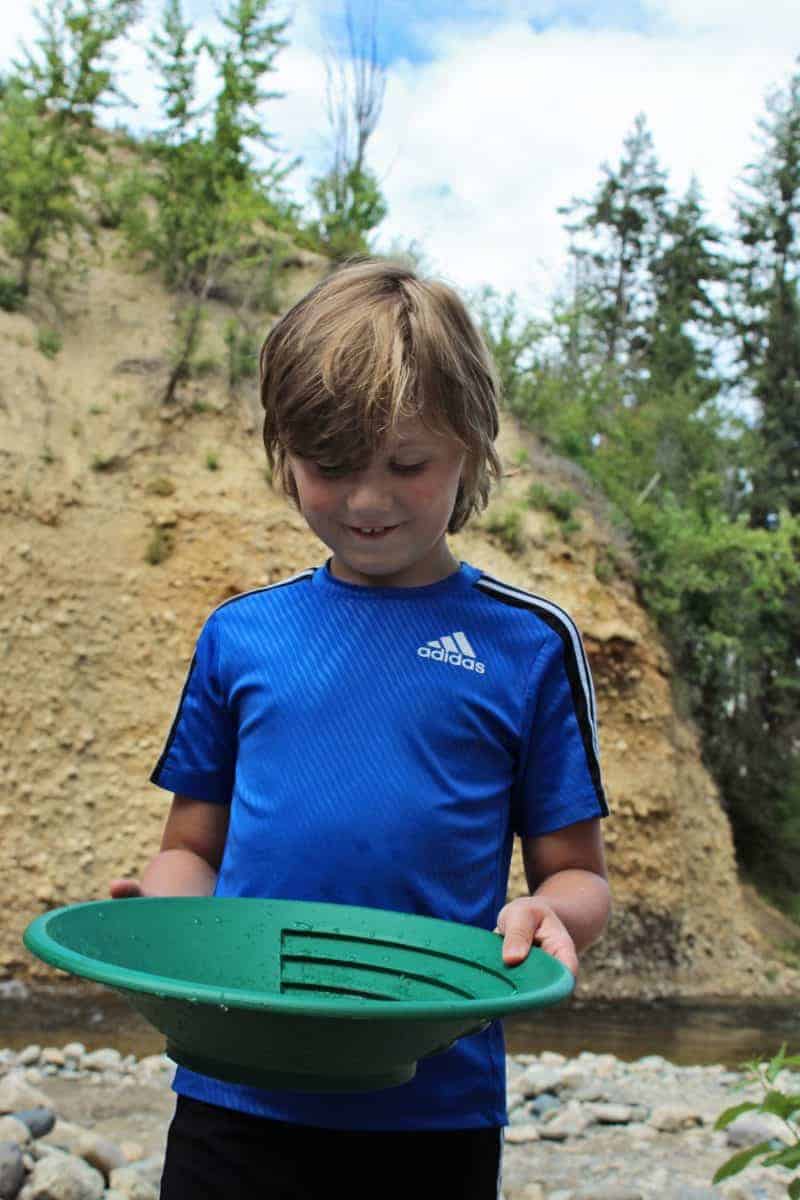
Where do you get a gold pan?
Some families may have a gold pan kicking around somewhere. Ask your parents, grandparents, extended family, or friends if they have one. You can also probably find a used one pretty cheap. If all else fails, a new pan from an outdoor shop will cost you less than $20.
We bought my gemstone-loving nephew a brand-new pan, vial, and snuffer bottle from a prospector hobbyist store. If you go this route, you should know that brand-new pans have oils on their surface to keep the pans from sticking together. You need to get rid of this oil so the pan surface isn’t so smooth. That will help it catch the gold better. My nephew’s first task with his gold pan was to scratch it up as much as possible using a bunch of dry dirt and rocks. He had a great time ridding the pan of its pristine appearance.
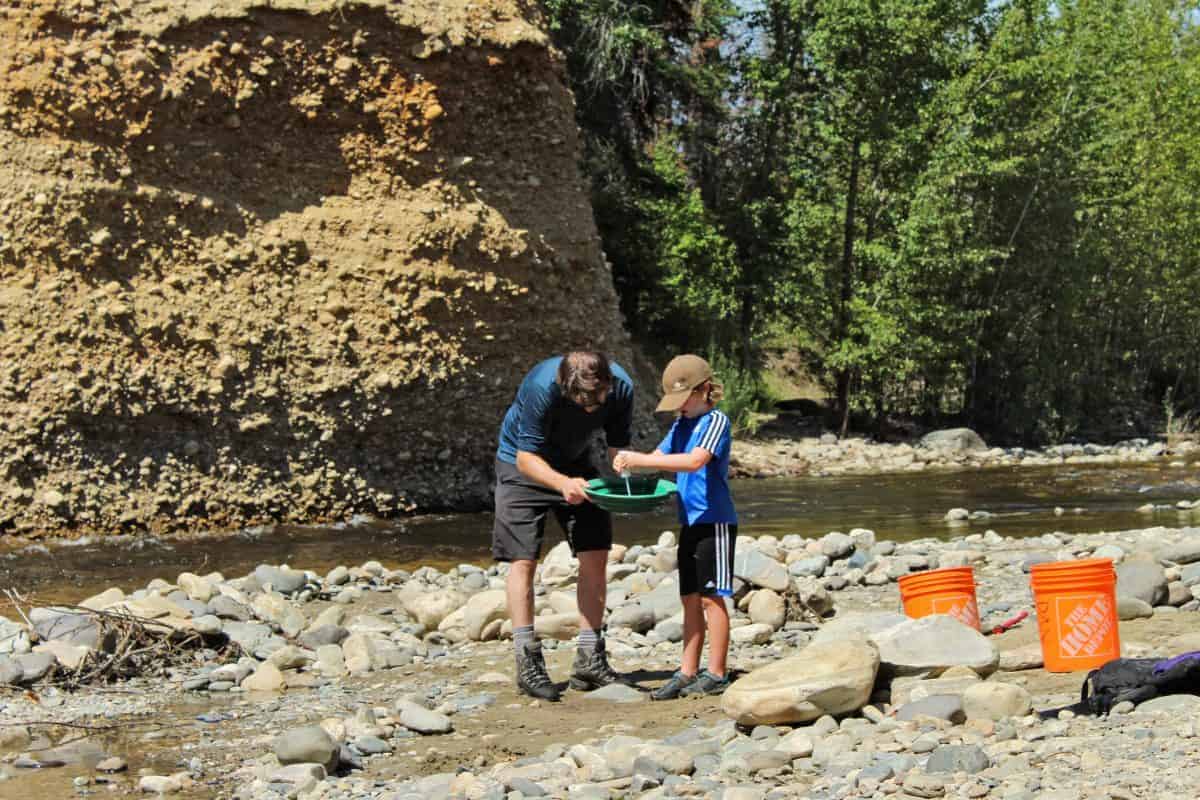
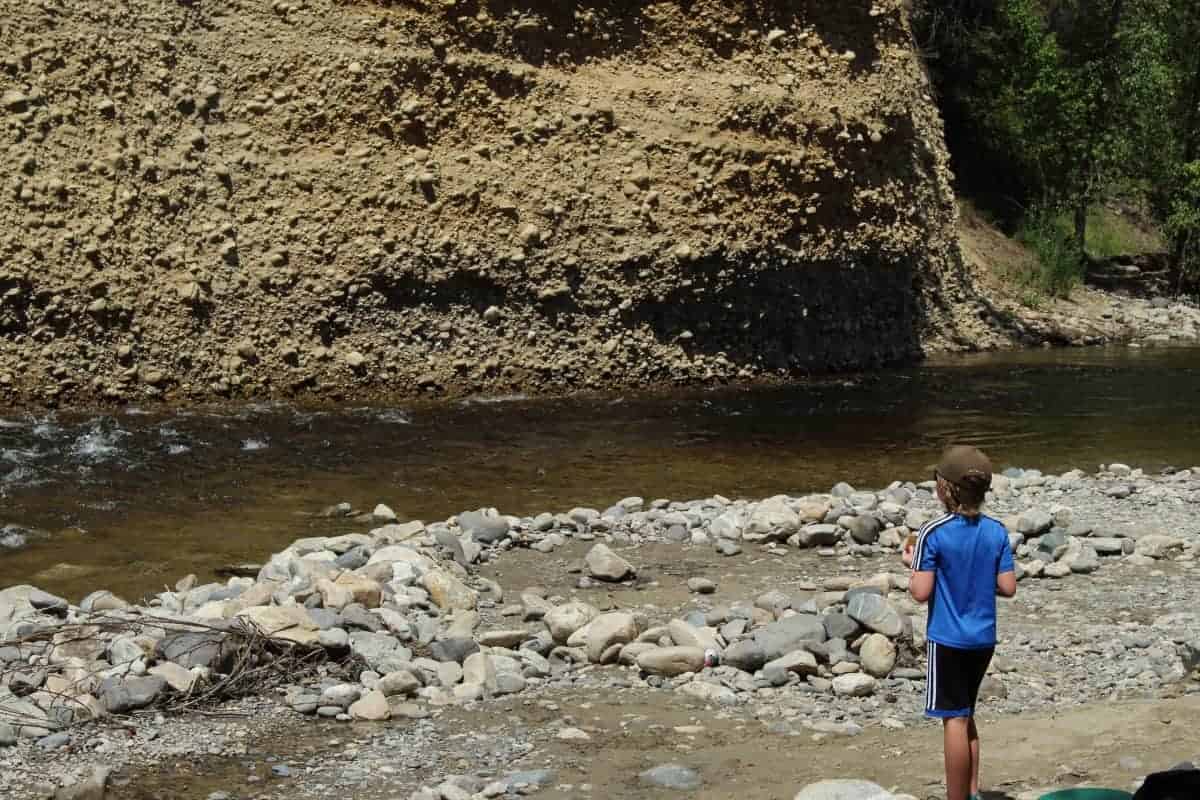
Safety, safety, safety
Panning for gold with kids is a safe activity, but it is near streams and water safety should always be taken into account. Even if your kid is an amazing swimmer, creeks and rivers have currents that bring some very serious concerns, especially during flooding season. If the water is rushing too fast for comfort, put your child in a lifejacket and find the calmest and most shallow areas. If you can’t find a safe place, save gold panning for another day or another creek. Scope out a location before bringing your wee ones out for a day of gold panning, if possible, so you are comfortable with the terrain and know what to expect.
We were fortunate that the area we were in had some pools of water in areas of the dry creek bed, giving us peace of mind. To further punctuate the safety of our location, another family with two youngsters under five came out so their kids could swim in the creek. As an extra safety measure, we always give a family member our location and an estimated time to be home.
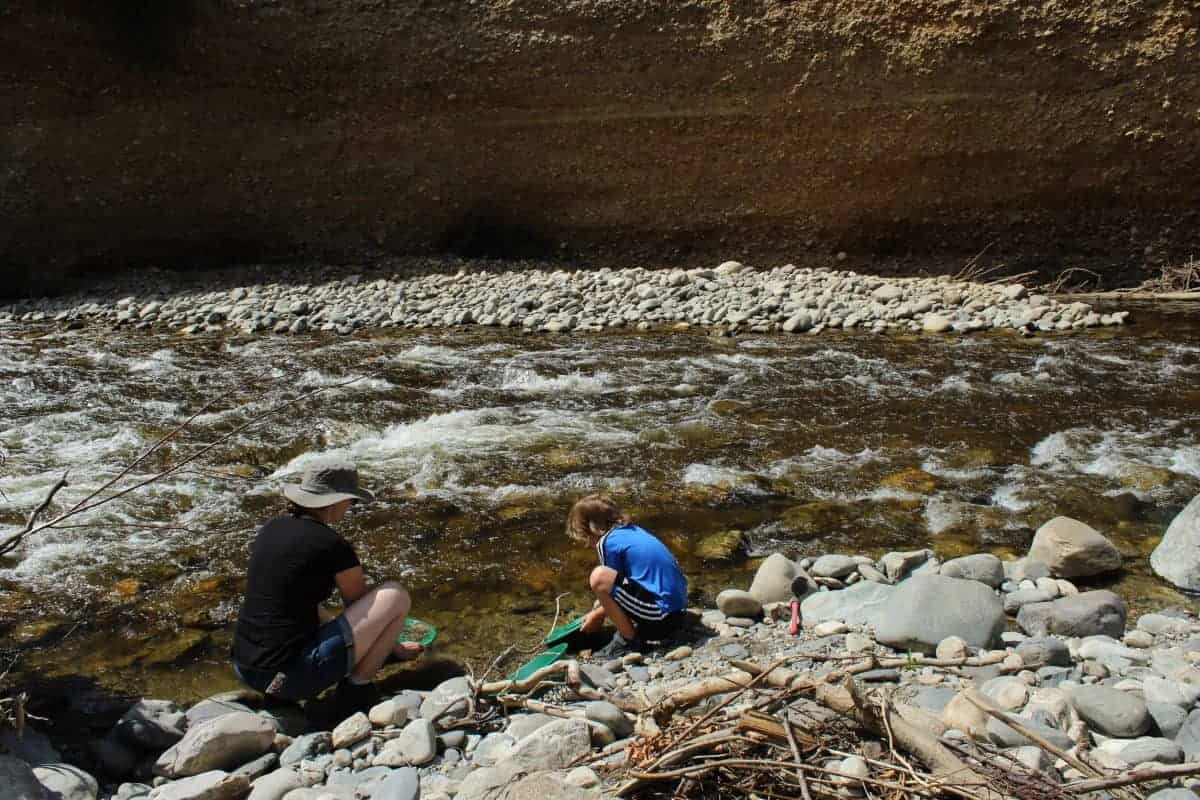
Where can you pan for gold?
Let’s talk gold claims for a moment. A claim is a permit that grants you the use of a specific piece of land that you’re legally allowed to pan for gold and other minerals. Recreational gold panners don’t need their own claim, but you do need to make sure you’re not panning on another person’s claim (in the old days, they’d shoot you for this!).
As awesome as it would be to grab a pan and head to any creek, there are some rules about where you’re legally allowed to pan for gold. These rules vary, depending on where you live. Do a quick search online to find places that may be designated areas for recreational gold panning. In Canada, you can also pan on Crown land without claims. Likewise, in the US, you can pan on Bureau of Land Management land without claims.
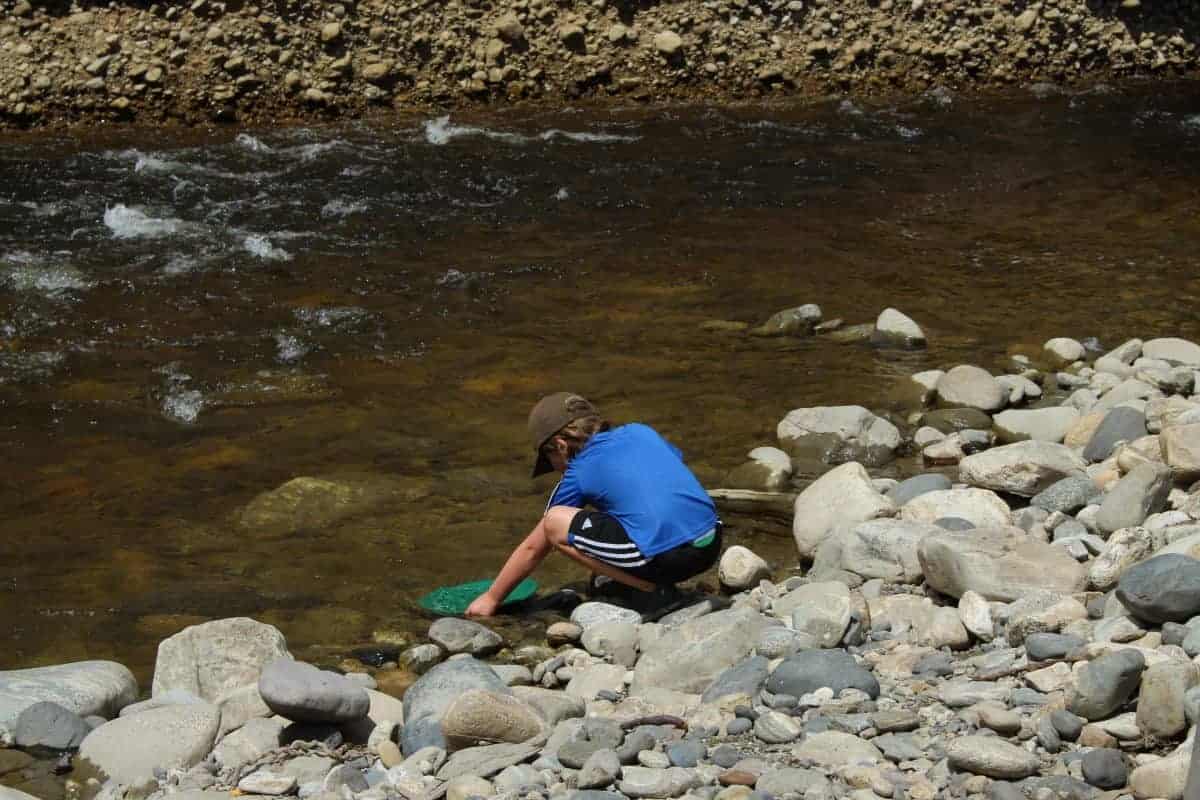
How old should kids be to pan for gold?
Panning for gold with kids can be done at any age, but there are definitely perks for panning with older kids. My nephew is almost eight. He was really interested in gold panning for about twenty minutes. After that, his patience waned because of the lack of instant/exciting results. Keep in mind, this is only one boy and we could have brought him out to the creek on a low-energy day. As far as age goes, it really depends on the kids. Patient or older children will be able to pan for longer periods. Younger kids, or children who can’t sit still for long periods, may need other activities to keep them busy.
If you’re bringing an infant along, gold panning needs to be done in shifts so somebody can keep the little one busy. The great outdoors is always a fun place, but with gold panning, safety at the creek comes first. Our baby doesn’t get much out of gold panning itself, but she loves to watch the movement of the water. We dipped her toes in a pool of water and let her touch the rocks and trees around us. Gold panning is something that she’ll grow into with time, but right now she’s just there to watch.
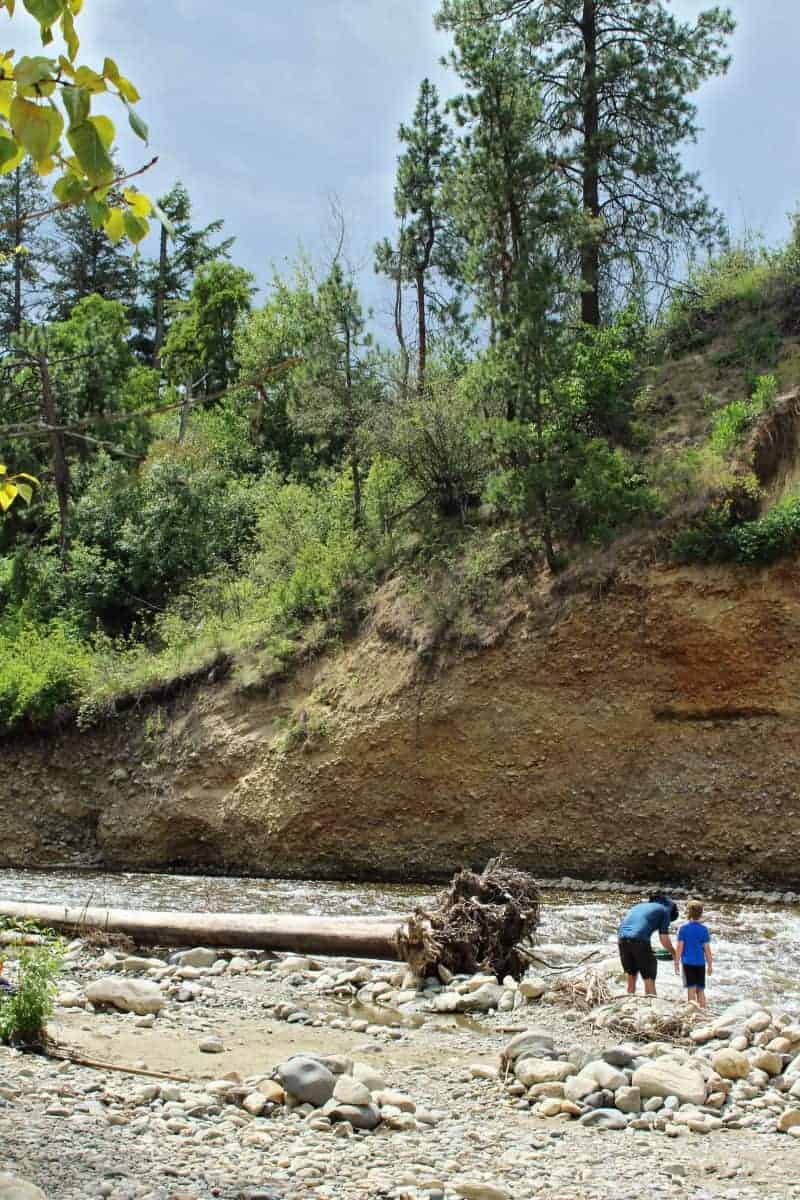

A quick overview of how to pan for gold
Panning for gold is pretty simple, but it does require patience. Here are a few more tips to walk you through the gold panning process, start to finish.
- Pick the right location – Ideally, you’ll find yourself in a place with gold rush history. Known gold producing areas increase the chances of finding gold (which greatly increases the thrill factor)
- Make sure you have the right gear – If you have your pan and a small shovel, you’re in fine form for some panning. If you want to bring a small container with a lid to put your gold into, or tweezers to pick up the gold from your pan, bring those along too.
- Find the best places to dig – Choose a gravel bar with cobbles instead of sandy areas (gold doesn’t settle in light material, like sand). The areas where you’ll have the most luck are on the inside curve of a river bend or on the downstream side of a boulder (gold tends to settle behind these boulders).
- Fill up your pan with gravel – Don’t be stingy, scoop in as much material as you can hold comfortably. Kids will take much less material in their pans.
- Submerge, stir, and shake the pan – Put the entire pan of rock material underwater. Pick off the large stones and shake the pan side-to-side vigorously. Use your hands to stir the material and help the heavy gold sink to the bottom of your pan.
- Wash off lighter rocks – Lift your pan hallway out of the water and angle it forward (tip it away from you). Moving the pan back and forth will wash off the lighter rocks.
- Find gold (hopefully) – As you get to the bottom of the pan, you might see some black sand—this is a good sign! This is heavy iron material that indicates that you might be in a gold-bearing area. When you’re down to about two tablespoons of material, angle the pan forward again and shake it side-to-side. Add a cup of water to your pan to help spread the remaining material. Slowly swirl the water. If there’s gold, it’ll stay put, while other material will move around. Use a keen eye because gold pieces can be quite small!
- Remove gold from the pan – Lucky or seasoned prospectors may find gold pieces big enough that they’re able to pick it up by pinching with their fingers. The more likely scenario is that you’ll find gold specks, which you can pick up with tweezers, or press on with the end of your fingertip to make it stick to your skin. If you brought a small container along, carefully put the gold inside and seal it with the lid so you don’t lose it.
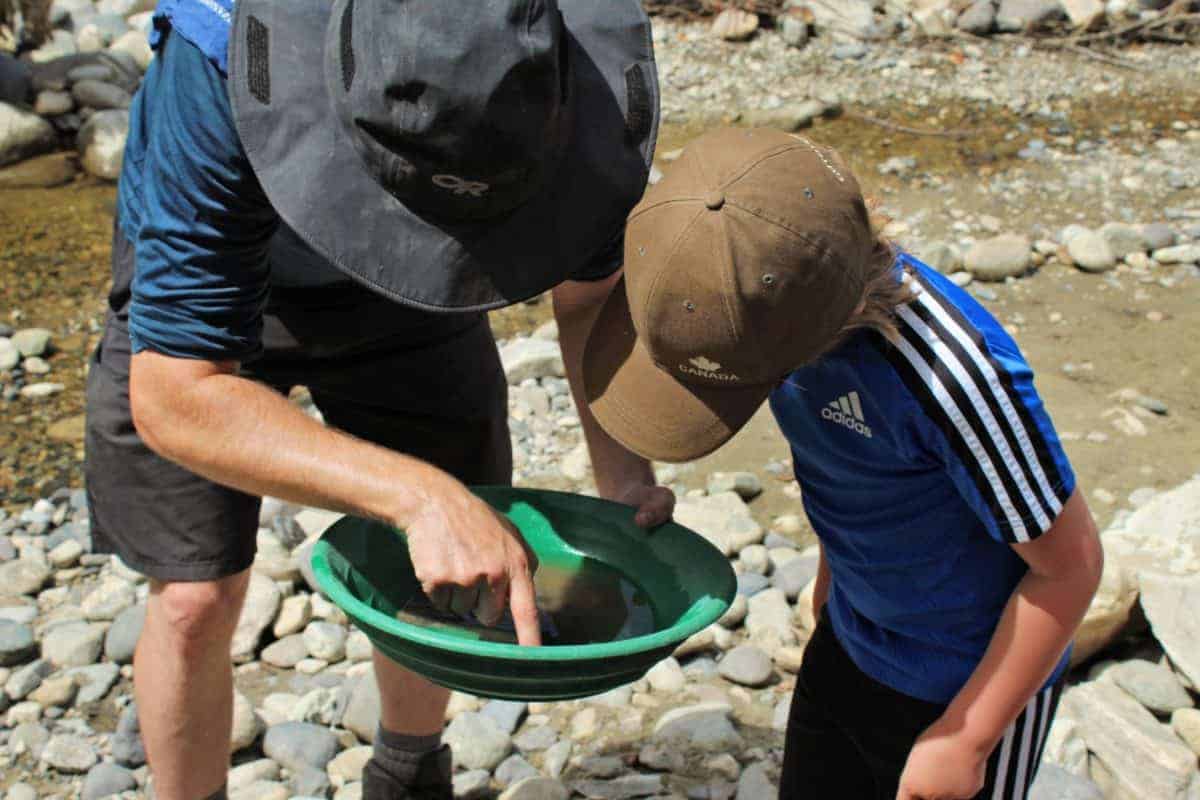
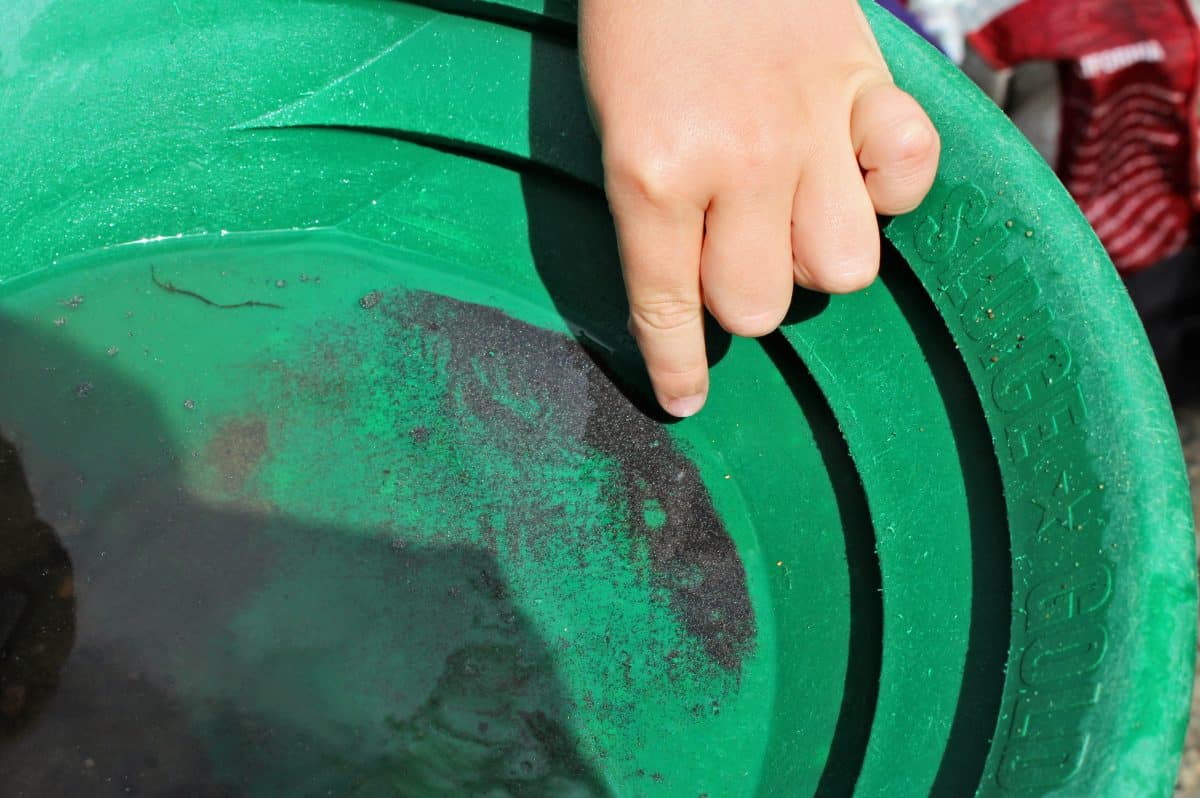
Can you actually find gold?
Absolutely! You can find real gold. Don’t expect to find giant nuggets, though. If you choose the right places, you’ll find specks and flecks of gold in your pan. Don’t be discouraged by small specks of gold. Finding gold in any quantity these days is an amazing feat! You can suck these small specks up in a snuffer bottle and slowly add to your gold collection every time you go out. Over time, it adds up!
Keep your eyes open for other great rocks and minerals. You don’t just find gold on these adventures; if you look in your pan, you might find garnets (which are similar to rubies), iron pyrite (fool’s gold), white quartz, and gemstones. These other types of minerals vary depending on your climate and location.
If you’re wondering about the difference between gold and fool’s gold, take a look at the color. If the material only sparkles in the sun, it’s iron pyrite. Real gold retains its bright luster even in the shade (although, it’s not sparkly like in cartoons!).
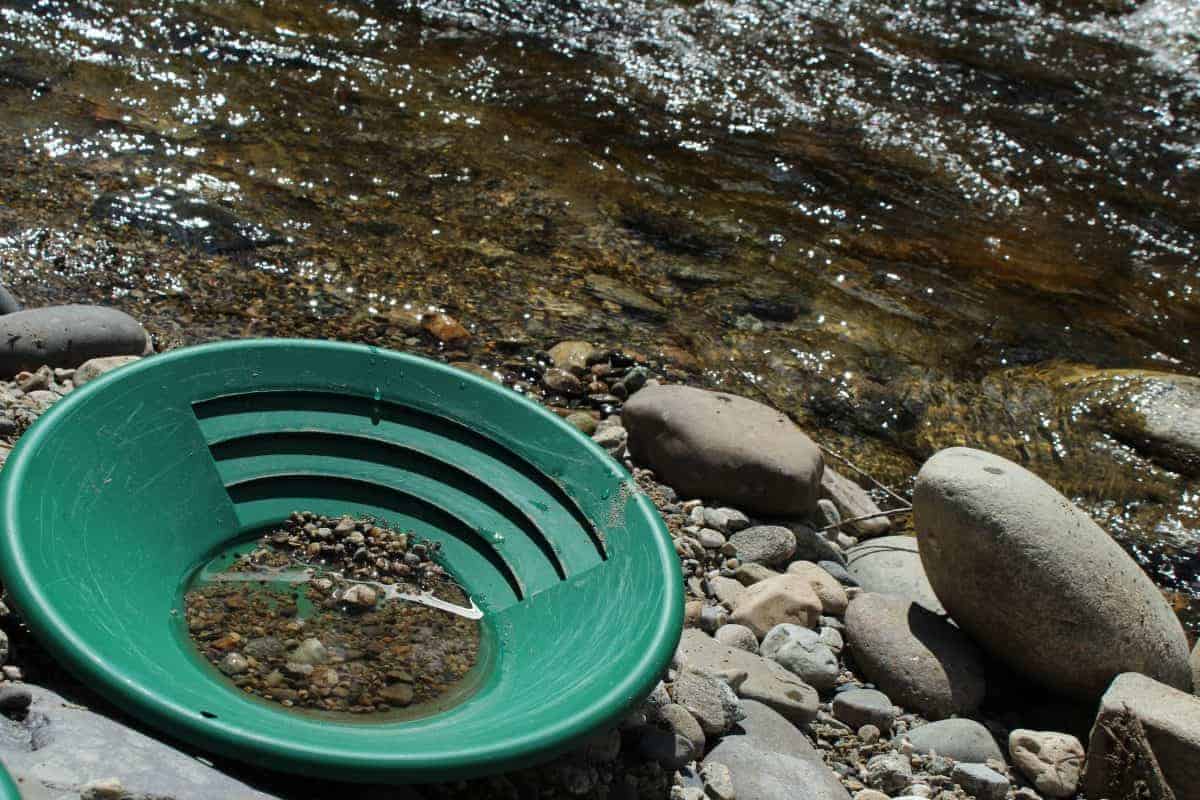
Do kids like panning for gold?
Panning for gold with kids involves digging, playing in the dirt and rocks, and getting wet. Therefore, it’s a great activity for kids. However, kids have shorter windows of interest than adults. My nephew took to it for a while, but what he was really fond of what Prospector Dan’s pickaxe because it reminded him of one of the tools he uses in a video game. His interest in gold panning came and went throughout the few hours we were out by the creek, so make sure to plan for other activities to break up the afternoon and keep the kids engaged.

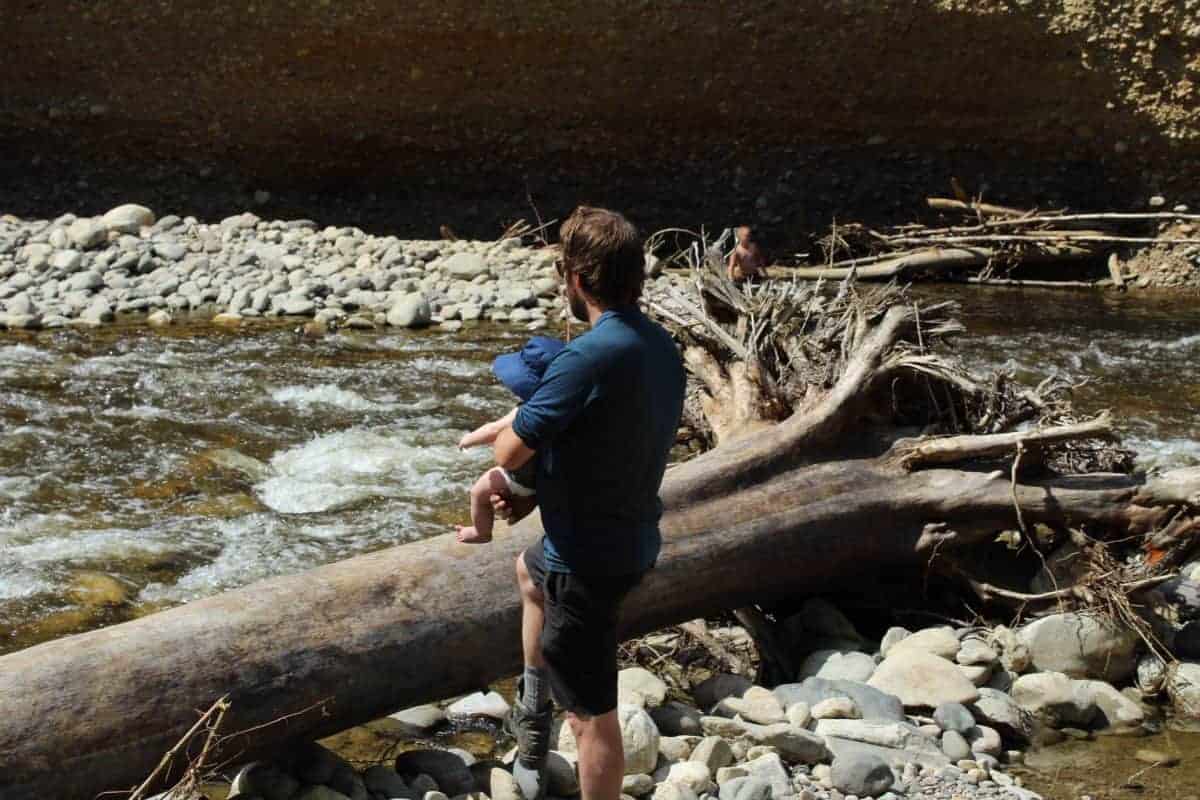
Other creek-side activities
Unless you have older children with the patience for gold panning, I would suggest merely planning for a day at the creek. This sets you up for fun, rather than expecting to spend the entire afternoon gold panning. Kids are only interested for so long before they want to do something else. Don’t allow them to get bored with gold panning by doing something else for a bit. Come back to gold panning later, after doing another activity. We suggest building a cairn, swimming (if it’s safe to do so), geocaching, racing sticks down the water, skipping stones, exploring the area, and playing in the sand.
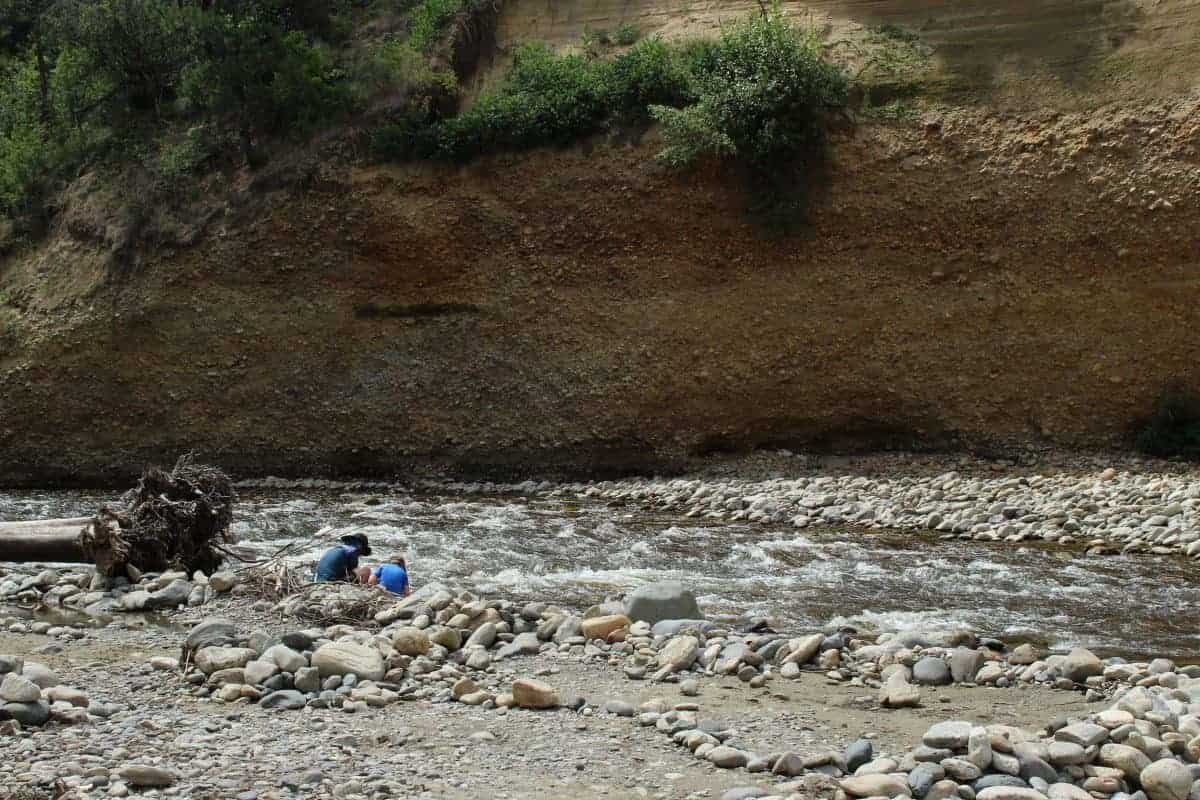
Tips to get your kids more involved in gold panning
My nephew liked gold panning a lot more when we involved him rather than just telling him what to do. Some things you can do to get them more involved are:
- My husband taught my nephew how to gold pan and then my nephew “taught” me.
- Get them to pick the spots where you dig.
- Bring along some painted rocks that you slip into the dirt in their gold pan. The size will be far more gratifying to them to find in their pan than small specks of gold.
Congratulations! You’re now a beginner prospector (and you didn’t even need to grow a mustache!). Hopefully, your kids enjoy learning something new while they play outside—and start a little gold collection along the way.
Have you ever tried to pan for gold?

About the author
Hey, I’m Kat Hodgins, a fun-loving Canadian who doesn’t say “eh”. I’m mom to a baby daughter, wife to a fantastic husband, and lover of the great outdoors. My husband and I have spent a great portion of our relationship outside, and that love of nature has become our business, The Sassy Plant. I’ve been a writer for over a decade, working with a variety of companies on a spectrum of topics from boating to health to building your own outhouse (honestly). I’ve been published by print magazines, online sites, and a micropress. I recently wrote a YA novel that is currently being queried for publication.
You can find more about Kat in the following locations:
Instagram: @houseofhodgins and @thesassyplant
Facebook: @itsthesassyplant
Website: houseofhodgins.com and TheSassyPlant.com
Comments
2 responses to “How to Pan for Gold with Kids”
Great article. But then I could be just a LITTLE biased.
[…] How to Pan for Gold at Run Wild My Child […]

Leave a Reply